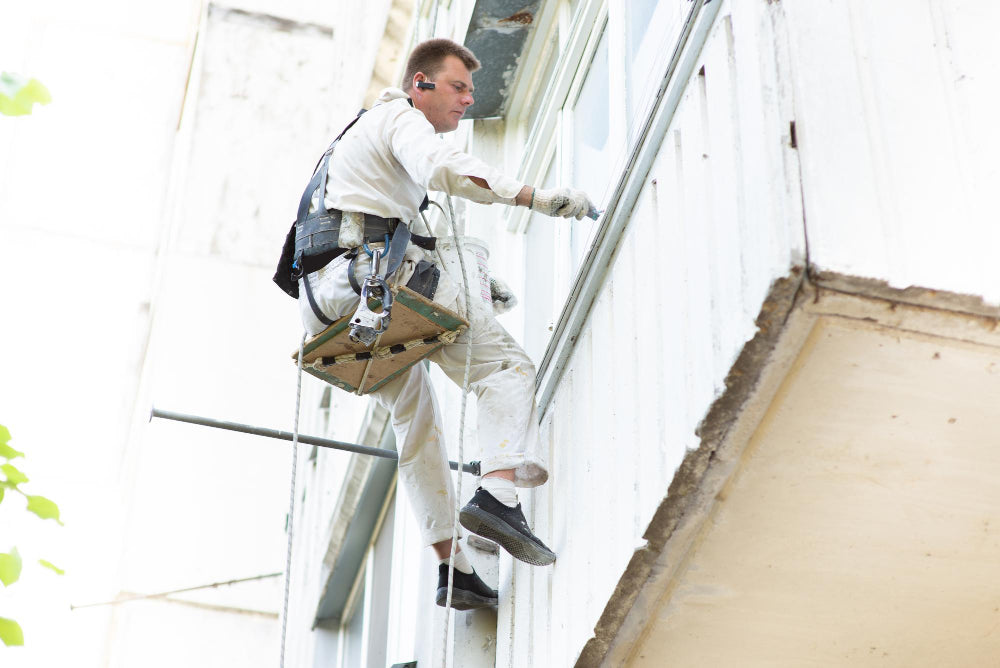Why and When to Use Mobile Scaffolding

When you think of a construction site, what's the first thing that comes to mind? It’s likely the sight of scaffolding surrounding a building—whether it’s for new construction or renovation. Scaffolding plays a key role in providing workers with safe access to heights. Among the many types of scaffolding, mobile scaffolding is a popular choice, offering flexibility, safety, and ease of use for many projects.
In this post, we’ll dive into the reasons why mobile scaffolding is so essential, the best times to use it, and some tips for using it safely and effectively.
Why Use Mobile Scaffolding?
Mobile scaffolding is a type of scaffold equipped with caster wheels at the base, allowing it to be moved easily from one location to another. Often made from aluminium, these scaffolds combine light weight with strength, making them an ideal option for many types of construction work.
The Key Benefits:
Mobility: Mobile scaffolding eliminates the need for constant disassembly and reassembly, which not only saves time but also reduces the risk of workplace accidents. By simply rolling the scaffold to the area that needs work, you cut down on manual labor and minimise the chance of errors during reassembly.
Lightweight and Strong: Aluminium is known for being about 75% lighter than steel scaffolding, yet it has a strength-to-weight ratio comparable to that of steel. This makes it easier to transport and maneuver, while still providing the stability needed for high-rise projects.
Safety: Scaffolding is generally safer than other alternatives like boom lifts, especially for interior work. A boom lift might not fit in tight spaces or areas where the structure is not designed to support heavy machinery. Mobile scaffolding is more flexible and safer in those situations.
Cost-Effective: Aluminium scaffolding is less expensive than steel, offering an affordable option for many construction projects. It also lasts longer and is easier to maintain, making it a good long-term investment for builders.
When Should You Use a Mobile Tower Scaffold?
So, when should you choose a mobile scaffold over a simple ladder or other equipment? The key factor is safety. Studies show that falls from heights are a leading cause of injury and fatalities in construction. In fact, workers can be at risk from falls even from heights as low as 1.8 meters, with the risk increasing as the height rises.
As a rule of thumb, a scaffold should be considered whenever work is being done at heights greater than three meters. Beyond this height, a mobile scaffold is not only safer but also more practical. For taller buildings (over four meters), it’s best to hire professional scaffolding services from a trusted provider.
What About Legal Requirements?
In Australia, scaffolding work is considered a high-risk activity. If the project involves scaffolding over certain heights or complex tasks, a licensed scaffolder is required. There are three levels of scaffolding certifications:
- Basic
- Intermediate
- Advanced
A certified scaffolder ensures that your scaffold is set up properly, following all safety regulations. Non-compliance can lead to heavy fines, so it’s crucial to hire a professional when needed.
How to Safely Use Mobile Scaffolding
While mobile scaffolding is a great tool, it’s essential to use it correctly to maximise its safety and effectiveness. Here are some best practices for working with mobile scaffolding:
- Check the Surface
Before setting up a mobile scaffold, make sure the ground is level and stable. It should have a slope of no more than 1%. If you’re working on natural earth, place the scaffold on boards or planks to help distribute the weight and prevent the scaffold from sinking into the ground.
- Lock the Wheels
Once you’ve positioned the scaffold, always lock the wheels to prevent accidental movement. If the wheels aren’t locked and a worker or equipment is left on the scaffold, it could shift unexpectedly, causing accidents or injuries.
- No Workers on the Scaffold While Moving
Only move the scaffold when there are no workers or equipment on it. Even though it’s designed to be mobile, the sudden movement could cause workers to lose their balance or be struck by falling equipment.
- Inspect Before and After Use
While aluminium scaffolding is known for its durability and corrosion resistance, it’s still important to conduct safety checks before and after every use. Look for signs of wear and tear, and check that all parts are secure. Always inspect the scaffold after any significant incident, such as a collision or exposure to severe weather.
Conclusion: The Value and Safety of Mobile Scaffolding
Mobile scaffolding is an invaluable tool in construction, offering a blend of mobility, safety, and cost-effectiveness for tasks at height. Its lightweight design, ease of movement, and ability to support workers at varying elevations make it an ideal solution for both short-term and long-term projects. However, ensuring its proper use and adherence to safety protocols is essential to prevent accidents and maximise its effectiveness. By understanding when and how to use mobile scaffolding safely, construction teams can improve productivity, reduce risks, and comply with legal requirements, creating a safer and more efficient work environment.
Need Help with Your Mobile Scaffolding Requirements?
At Proview Scaffolding, we specialize in providing top-quality Proview Aluminium Towers that are perfect for all your mobile scaffolding needs. Whether you're looking for height-adjustable, lightweight solutions or robust scaffolding towers, we’ve got you covered. Contact our team today to find out how we can assist you.
Call us at 1300 168 134 or send us an email at sales@proviewscaffolding.com.au. We're here to help keep your projects safe and compliant!
Popular towers combinations
Narrow Towers
Wide Towers
6.2m - 6.6m Wide Aluminium Mobile Scaffold Tower |
4.2 -4.6m Wide Aluminium Mobile Scaffold Tower |


